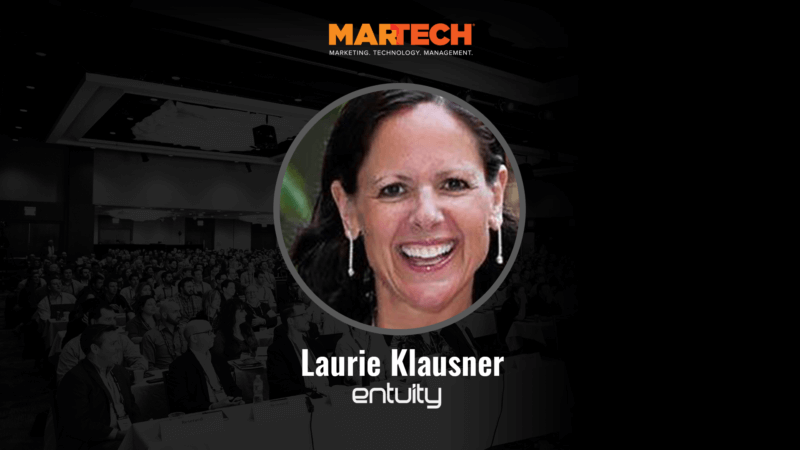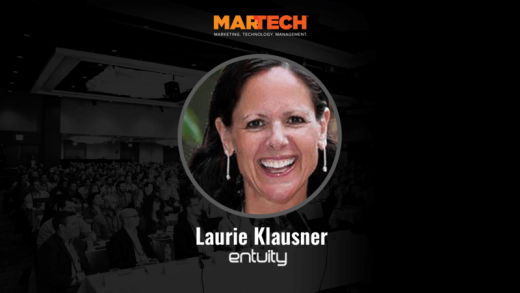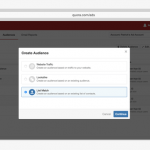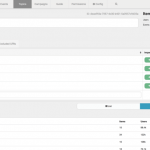How to rebuild a martech stack: Entuity marketing VP on lessons learned during yearlong audit
Laurie Klausner will be a panelist for the MarTech Boston session, ‘Insights from Inside the Marketing Stacks of Red Wing Shoe Co., iCrossing and Entuity.’

As Entuity’s vice president of global marketing, Laurie Klausner manages all marketing technology for the network analytics software platform.
After joining the company three years ago, one of Klausner’s first major projects was a complete audit of Entuity’s martech stack.
“In essence, we looked at everything we were using,” says Klausner.
During the yearlong project, she says one of the biggest eye-openers for her was the number of tools being used by a limited number of people as a result of her team being split between two different continents.
“We are a global marketing team, so a fair number of my direct reports work out of our London office where Entuity’s headquarters are,” says Klausner, “Some of us are here in Massachusetts, so it was very disjointed.”
She says the two marketing offices — one in London and one in Massachusetts — were often using different marketing technology.
“That was a big challenge for us — to determine what was being used and then, most importantly, what makes the most sense so that we are all looking at the same information and have the same data.”
To get a full view of what was at play, Klausner used CabinetM, a digital marketing management solution that helps marketers assess how their marketing tools are performing, where there are gaps and how to integrate or replace new technology. She says building Entuity’s marketing stack on CabinetM offered visibility into the changes that needed to happen.
“Using these stacks really helped us put a visual guide behind what we should do and what kind of money we were spending,” says Klausner. “There were also tools we thought were valuable that when we stacked them up, it didn’t make sense. There were some things that made sense locally, but not globally — and that was a learning point for us.”
Klausner will be a panelist on the “Insights from Inside the Marketing Stacks of Red Wing Shoe Co., iCrossing and Entuity” session led by CabinetM CEO Anita Brearton. Today she’s sharing the lessons she learned during that extensive martech audit, and how it helped realign her company’s overall marketing efforts.
It sounds like the biggest challenge you identified during the audit was getting everyone on the same marketing technology platforms.
Klausner: That was a big challenge, and it was harder than you think.
One of our teammates in the London office sent emails through a certain platform, and we, the people here in North America, used a different email platform. We couldn’t even say — without having to pull together all of that data, that was in different locations, and the tools weren’t identical — how many emails did we send? What was our open rate? Everything was convoluted.
That took a lot of undoing, and, of course, people get very attached to their tools. We had to bring people up to speed once we made a decision what the right tool was. The [CabinetM] stacks really gave us visibility. I don’t think we could have done it as quickly.
I guess a year doesn’t sound too quick, but, by the time we did the full audit, figured out what was working, and then got everyone up and running on the same thing so that we could have clear visibility about our ROI — that was a long process.
How did you manage such a comprehensive audit? Who on your team were the primary stakeholders?
Klausner: It was driven by marketing, but we involved product management and sales.
Sales was an essential part — they had some very strong feelings about what we did or didn’t do, and that comes back to the beauty of analytics. We were able to show here’s what we see. Our sales team went a little bit on their gut. We were able to show, with data, what did or didn’t work.
Those were the primary groups involved; but to drive the effort, we worked in lockstep with our sales team — the vice president of global sales was very involved.
When building out your marketing stacks during the audit, how did you choose what to keep and what to build upon, and how did you budget for those things?
Klausner: There are some tools already in place at Entuity that forced me to go in a certain direction because undoing them was almost untenable because so many people were connected to something.
There are some tools that we did literally rip and replace because we knew there was something better, there was a better global solution. There are some legacy products that I would never choose today. They’re fine — not the best; but we were too far down the road with too many people hooked in to them.
We are in constant contact with our CFO and with finance. Obviously, we know what our budget is, but there were tools we needed to add that we didn’t account for — so that does come up.
Thinking about where we came in, I think we were able to make significant substantive changes, although [it was] a little painful along the way.
There was an email platform, and it did a good job in North America, but it wasn’t that applicable for what we were trying to do in other parts of the world. That was one of the tools where we realized, okay, this is what you guys are comfortable using, but it’s not something that transfers well to other parts of the world.
That was a specific instance where we ended up taking out something that people liked and were accustomed to using. We had to do some groundwork that had already been done, but now it’s a more smooth process.
Do you have any rules around adding new marketing technologies to the stack?
Klausner: I don’t know that we have any hard and fast rules other than we’re not, in the foreseeable future, changing our anchor platform. Anything we think about has to have a seamless integration either into WordPress or Salesforce — that’s just essential. We won’t even look at tools that don’t integrate.
Of course, most tools are built for that today — that’s one good thing about choosing leading vendors. Our focus, if we’re adding something new, is: are we able to get the right visibility from it into what we’re doing and understand our spend?
There’s one person on my team who runs our digital assets; he thinks about everything that ties into our website, and all of the tools around that. He loves to do this research, so he is constantly looking at new tools.
We just recently added Zendesk Chat to our home page, but he looked at 15 vendors before doing it. We looked at them all — we looked at our marketing stack, how it fit in, and then made a decision based on cost and effectiveness, obviously.
We aren’t trying to boil the ocean — we try to focus on doing a few things well. Lead generation. Channel enablement. I think that’s easier than somebody who is trying to do 15 different things, and looking at all the tools that are involved in that. We have a little bit less because we’re fairly narrow in what we’re trying to do.
How often do you think it will be necessary to revisit the audit process?
Klausner: We are constantly thinking about tweaks, not overhauls. In our weekly meetings, we talk about how the tools are working, if something new is out there, has somebody read something. We definitely talk about that a lot.
And I would definitely not be able to say, “In five years these are the platforms we will be using.” But I can say, “In 18 months, we’ll be using them.”
Like everything, I don’t even know what the changes will be. But we would be crazy to think this is it and we’re done, and we, as best we can, have the right iteration. I think there’ll be something that comes along that transforms us, and I’m excited about it. We are better marketers for that — I think we do a better job with the tools we have today than 18 months ago.
For right now, we’re not unhappy with our basis, but I do think it will change.
Marketing Land – Internet Marketing News, Strategies & Tips
(44)













